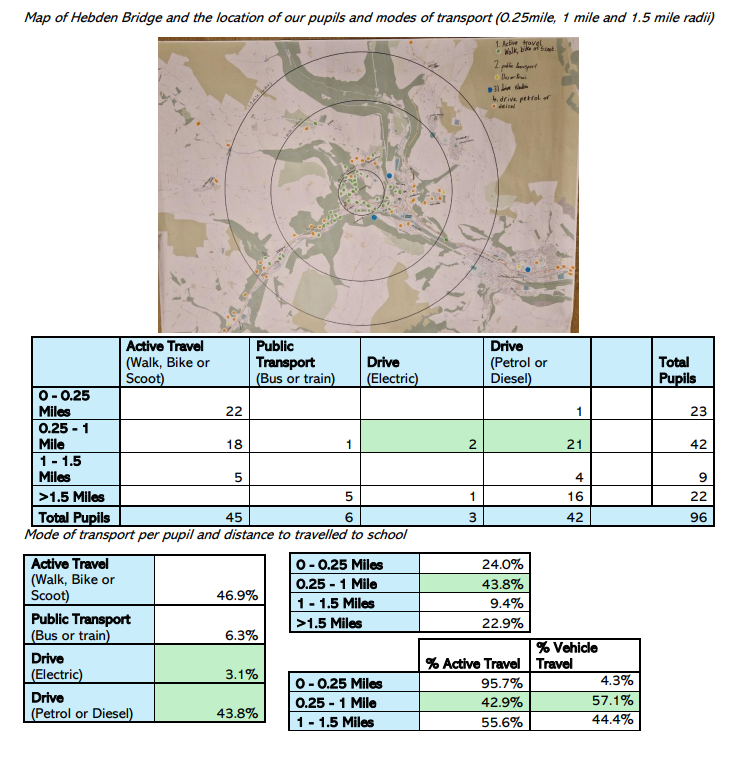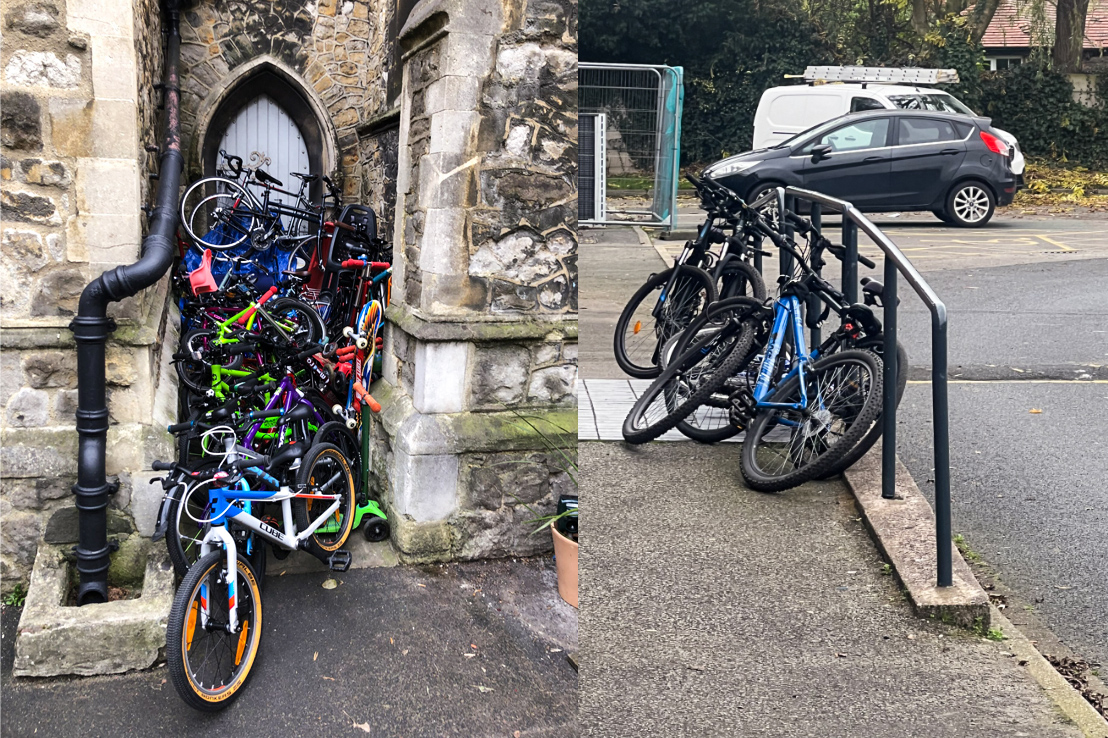In 2024, Cyclehoop launched the Education Fund, a grant funding initiative where we donate a percentage of our profit to one or more school cycle parking projects.
Schools were invited to apply for the fund by providing information about their current provisions and their aspirations for the future.
The response was overwhelming and revealed a hard truth: many schools across the UK are grappling with outdated, unsafe, and inadequate bike storage facilities. While cycling is widely promoted as an alternative for healthier, sustainable travel, poor infrastructure is stopping young cyclists before they even start.
A gap in provision
We received 417 applications for the Education Fund, and the submissions told a consistent and troubling story. Schools reported broken racks, unsecure areas, and poorly designed parking facilities. Images shared showed bikes precariously piled on top of one another, leaning against fences, or locked in unlit and unsafe corners. These conditions deter students from cycling, worry parents about theft or damage, and leave schools unable to fully support active travel initiatives.
The issue is not due to a lack of will—schools want to encourage cycling. Active travel offers students a wide range of benefits that extend beyond the journey to school. Cycling can significantly improve students’ ability to concentrate, helping them focus for longer periods during lessons. It also fosters better time management, as incorporating exercise into a daily routine helps students balance their schedules and feel motivated to complete their work.
The physical health benefits of cycling are clear—it’s a cardiovascular workout that promotes better heart health and overall fitness. But cycling also has a profound impact on mental health, boosting confidence, reducing stress, and contributing to a greater sense of well-being.
Encouraging cycling to school has wider community benefits too. By reducing the number of cars around schools, traffic congestion and pollution are significantly lowered, creating a safer and more pleasant environment for everyone. Students who cycle often arrive at school feeling energised and focused, which can improve academic performance and engagement in the classroom.
With these far-reaching benefits, it’s clear why cycling should play a central role in shaping healthier, happier, and more successful school communities.
Funding cycle parking for schools
The Department for Education has emphasised the importance of using capital funding to invest in facilities that improve health and wellbeing. Schools in England have received £57.7 billion in core funding between 2023 and 2024, with further increases expected this year. Yet, many have been unable to prioritise secure cycle parking, leaving students at a disadvantage.
When schools do invest in proper infrastructure, the benefits are immediate and transformative. A recent Sustrans report found that implementing active travel interventions in schools could lead to an additional 18,000 pupils walking, scooting, or cycling to school daily. This shift would significantly reduce congestion and pollution around school gates, while students benefit from the physical and mental health advantages of active travel.
An emerging pattern
Many of the 417 schools that applied to the Education Fund shared similar concerns about the state of their cycle parking facilities. One primary school in Alveley noted, “80% of parents polled say they would be ‘likely’ or ‘certain’ to bring their children to school using their bike if there was storage at school.”
Another school in Laindon emphasised the need for secure facilities, saying, “Ensuring the bikes are secure during the school day prevents them from becoming unsafe for children to use.”
A school in the Isle of Lewis painted a vivid picture of the daily challenges faced by students: “Bike wheels regularly get stuck, and bikes fall on top of each other. The rack moves when bikes are stuck, and you try to pull them out. The bikes are not sheltered, and our current bike rack is getting old. Handles get stuck in the fence and the gate. The bike rack is very close to parked cars, which can be dangerous at the end of the day when cars and bikes are leaving at the same time.”
The overwhelming number of applications highlight the pressing need for safe, functional, and accessible cycle parking, showing how inadequate facilities can discourage active travel and put children at risk.
The impact on students
For students, a damaged or stolen bike is a missed opportunity to build confidence, independence, and healthy habits. Hebden Royd Primary School, the first winner of the Cyclehoop Education Fund, demonstrates the transformational impact secure cycle parking can have when schools support active travel.

Urgent action needed
The Education Fund has highlighted the urgent need for safe and secure cycle parking in schools. With proper investment, this need can be addressed. Capital revenue funding provides an opportunity for schools to prioritise cycling infrastructure, creating a culture where cycling is accessible, safe, and normal for every student.
If we want to encourage the cyclists of tomorrow, we need to act today. Every secured bike represents a step toward healthier students, greener communities, and safer roads. Every child who feels confident cycling to school is a success story. Together, schools, councils, and communities can ensure that dangerous bike storage no longer stands in the way of progress.
For schools ready to take the next step, our sales team is here to help turn ideas into action. From tailored solutions to quick implementation, we’ll guide you every step of the way.
Let’s give every child the chance to take one big step forward—one pedal stroke at a time.
Applications for the Cyclehoop Education Fund 2025 will open in Q3. Sign up to our newsletter for alerts.

